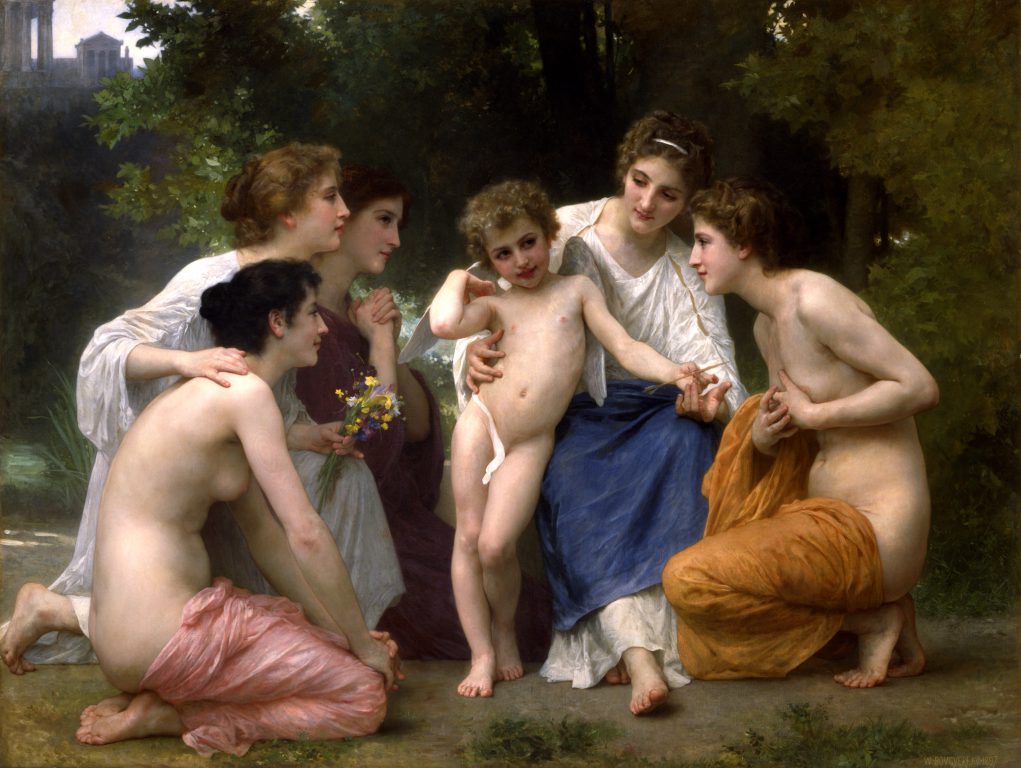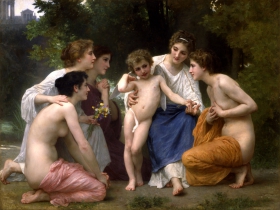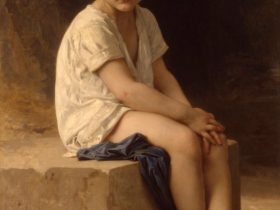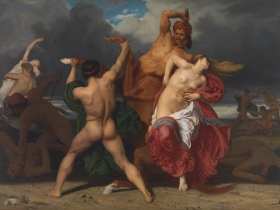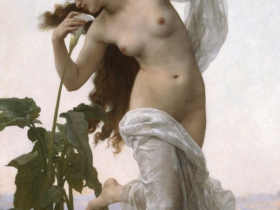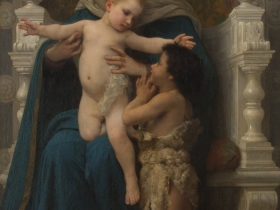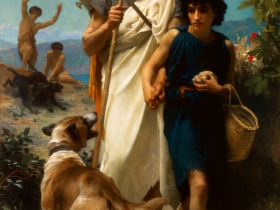The Sheer Beauty of Bouguereau
America’s Gilded Age loved the French artist’s paintings. A Milwaukee Art Museum show considers them anew.
In its current exhibition Bouguereau and America, the Milwaukee Art Museum (MAM) celebrates a French painter who was hugely popular in America’s Gilded Age. The exhibit features 41 oil paintings by William-Adolphe Bouguereau and explores his popularity among super-wealthy American art collectors.
Bouguereau and America is the first major show of the artist’s work since a 1984 exhibition at the Montreal Museum of Fine Arts.
At a recent press event, MAM curator of European art Tanya Paul noted that the Bouguereau exhibit, co-organized with Memphis Brooks Museum of Art, was nearly four years in the making.
“This has been a real labor of love,” she added.
Widely collected by American tycoons of industry, including J.P. Morgan and J. Paul Getty, Bouguereau’s oil paintings were once considered the epitome of refinement and class; a must-have for serious art collectors. Milwaukee businessman, the England-born Frederick Layton, was also a collector. His Bouguereau painting, the spectacular “Homer and His Guide,” (1884) set against an azure background and depicting a young male shepherd guiding the blind Greek poet through a rocky, yet seemingly fertile, landscape, is part of the MAM’s permanent collection.
Yet all this was happening as French impressionism was storming the world of art, as a rebellion against artists like Bouguereau.
Bouguereau and America is divided into five sections: portraiture, mythology, religion, genre paintings, and sensuous subjects. Influenced by Italian Renaissance painters Michelangelo and Rafael, and Dutch artist Rubens, Bouguereau’s French Academic style, with its rich, realistic detail, stands in stark contrast to the freer, softer lines of the Impressionists.
Many of the painter’s works — like “Night” (1883) and “Battle of the Centaurs and the Lapithae” (1852) — contain ominous elements like brooding storm clouds. A few skillfully capture the fantastical and the grotesque. “Orestes Pursued by The Furies” (1862) recounts the Greek myth of Orestes, who, seeking vengeance for the murder of his father Agamemnon, is subjected to torment by the Furies, three female spirits of vengeance. The three Furies, demonic creatures with snakes for hair, surround Orestes, who, hands clasped over his ears, looks anguished, on the verge of madness.
Bouguereau is well-known for his genre paintings, mainly of girls and young women at work, such as “Washerwomen of Fouesnant (1869) and “Girl Sewing, (1869). Many of the women, with their direct gazes, appear capable, intelligent and confident.
His women are also creative. The striking “Art and Literature” (1867) features two women, dressed in ancient Greek or Roman clothing, one standing and holding a lyre and the other sitting on a bench, legs crossed, a paintbrush in her hand. This was at a time when the classical music and art world was largely male-dominated, which makes this painting all the more striking.
But his paintings offer an idealistic view of poverty. The “beggars” pictured in two paintings — “Little Beggar” (1880) and “The Little Beggars (1890) — have clean feet and faces, and while their clothing is plain, not torn and ragged. Out of all his paintings, Bouguereau’s genre works were the most in demand by American millionaires, offering a beauty devoid of social realism.
A number of Bouguereau’s works highlight nude or partially nude female figures, often against idyllic spring and autumnal backgrounds. Cupid, or Eros, Greek god of love, is portrayed in many paintings, as a chubby toddler (“A Young Girl Defending Herself Against Eros,” 1880) or young boy with a bow and arrow (“Dream of Spring,” 1901, “Flight of Love,” 1901).
Despite America’s puritanical views on sex at the time, the French artist’s works were considered morally acceptable by most (although his painting “Return of Spring” was publicly vandalized twice by offended parties) probably due to the fact that the women in his paintings appear fresh-faced and virginal, despite the lack of clothing.
“He would take images of the female nude and cloak them in propriety,” Paul quipped.
Besides the paintings, the exhibit includes an educational digital interactive component that traces the collection history of the French artist’s works over nearly 150 years. On an iPad, museum visitors can click on pictures of each painting for a detailed history of who collected Bouguereau’s works, and when and where the paintings were purchased.
The exhibition will run through May 12.
Gallery
If you think stories like this are important, become a member of Urban Milwaukee and help support real independent journalism. Plus you get some cool added benefits, all detailed here.
Art
-
Winning Artists Works on Display
 May 30th, 2024 by Annie Raab
May 30th, 2024 by Annie Raab
-
5 Huge Rainbow Arcs Coming To Downtown
 Apr 29th, 2024 by Jeramey Jannene
Apr 29th, 2024 by Jeramey Jannene
-
Exhibit Tells Story of Vietnam War Resistors in the Military
 Mar 29th, 2024 by Bill Christofferson
Mar 29th, 2024 by Bill Christofferson



